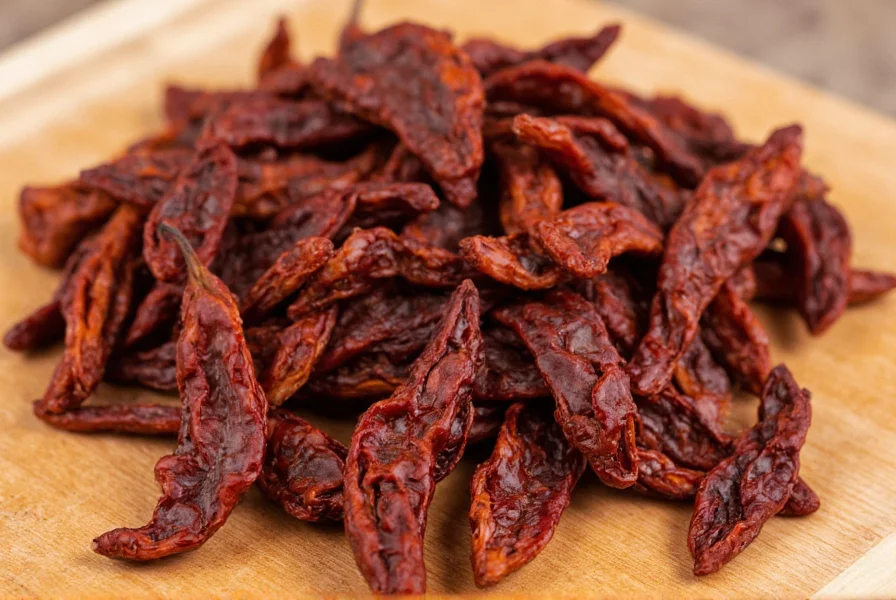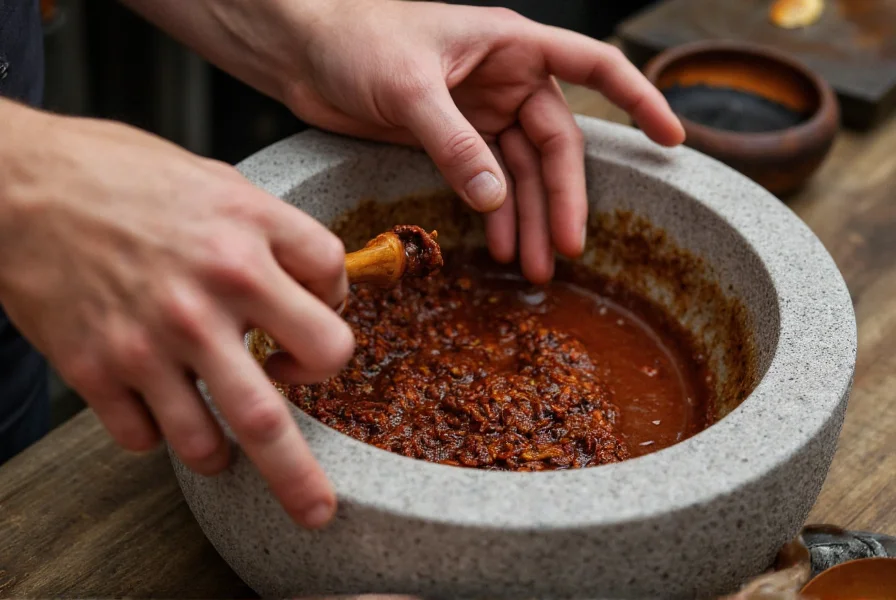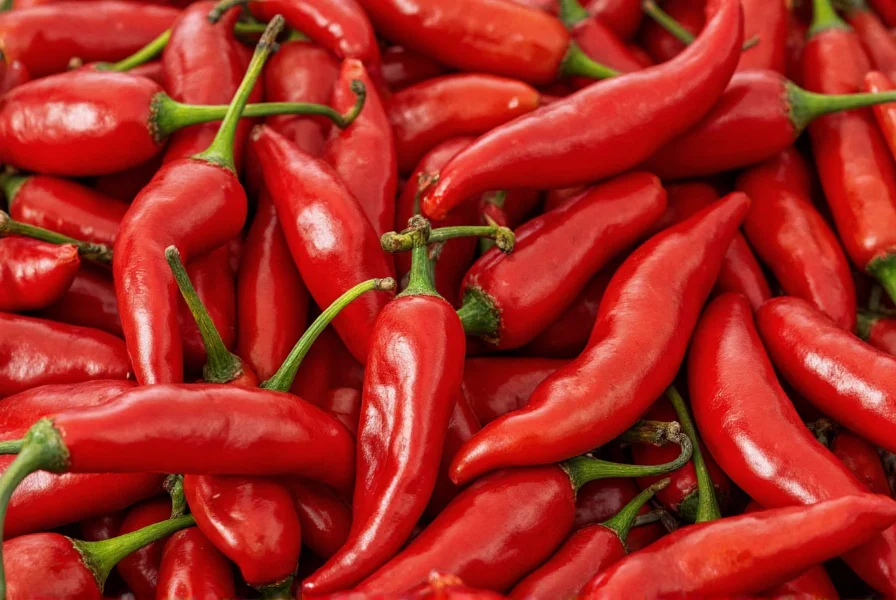Understanding what is an ancho chili begins with recognizing its origin as a fully matured poblano pepper that's been dried. Unlike fresh poblanos which are green and mild, the drying process transforms both the color and flavor profile, creating a complex ingredient prized by chefs and home cooks alike.
Origin and History of Ancho Chilies
The term "ancho" means "wide" in Spanish, referring to the pepper's broad, flat shape. Native to Mexico, ancho chilies have been used in traditional cooking for centuries. They're primarily grown in the Mexican states of Chihuahua, Sinaloa, and Zacatecas, where ideal climate conditions produce the highest quality peppers.

Physical Characteristics
Ancho chilies typically measure 4-6 inches long and 2-3 inches wide at their broadest point. When properly dried, they have a:
- Deep reddish-brown to mahogany color
- Wrinkled, almost leathery texture
- Distinct heart-shaped appearance
- Flexible but not brittle consistency
| Characteristic | Fresh Poblano | Dried Ancho |
|---|---|---|
| Color | Dark green | Deep reddish-brown |
| Heat Level | Mild (1,000-2,000 SHU) | Mild (1,000-2,000 SHU) |
| Flavor Profile | Grassy, slightly bitter | Fruity, sweet, with notes of raisin and tobacco |
| Primary Use | Stuffed peppers, rajas con crema | Moles, adobo sauces, spice rubs |
Flavor Profile and Heat Level
When exploring what is an ancho chili in culinary terms, its distinctive flavor is more important than its heat. Anchovies register between 1,000-2,000 Scoville Heat Units, placing them on the milder end of the chili spectrum—similar to a bell pepper with just a hint of warmth. The true value lies in their complex flavor profile featuring:
- Notes of dried fruit (particularly raisins and prunes)
- Subtle coffee and cocoa undertones
- Earthy, smoky characteristics
- A gentle sweetness that balances well with spices
How Ancho Chilies Are Made
The transformation from poblano to ancho occurs through careful drying. Farmers allow poblano peppers to fully ripen on the plant until they turn deep red, then harvest and dry them either in the sun or using specialized equipment. Properly dried anchovies should be flexible enough to bend without breaking—a sign they haven't been over-dried.
Culinary Applications
Professional chefs value anchovies for their ability to add depth without overwhelming heat. Common uses include:
- Mole sauces - Anchovies form the base of many traditional mole recipes
- Adobo paste - Blended with spices and vinegar for marinades
- Spice rubs - Ground anchovies add complexity to meat rubs
- Stews and braises - Whole anchovies infuse flavor during cooking
- Salsas - Rehydrated anchovies create rich, complex salsas
Using Ancho Chilies in Your Kitchen
Before using dried anchovies, most recipes require rehydration. Simply place the peppers in a bowl, cover with hot water, and let soak for 15-20 minutes until softened. Remove stems and seeds (which contain most of the heat), then chop or blend as needed.
For grinding into powder, toast the dried peppers in a dry skillet for 1-2 minutes until fragrant, then process in a spice grinder. Store ancho powder in an airtight container away from light for up to 6 months.
Substitutes When You Can't Find Ancho Chilies
If you're wondering what is an ancho chili substitute, consider these options:
- Guajillo chilies - Similar mild heat with more tartness
- Mulato chilies - Close relative with deeper chocolate notes
- Chipotle powder - Use half amount (much hotter)
- Paprika - For color and mild flavor (no heat)
Storage Recommendations
Store whole dried anchovies in an airtight container in a cool, dark place. Properly stored, they'll maintain quality for 6-12 months. For longer storage, keep them in the freezer where they'll last 18-24 months. Check periodically for any signs of moisture or mold.
Nutritional Benefits
Ancho chilies contain capsaicin (in small amounts), vitamin A, vitamin C, and various antioxidants. While typically used in small quantities, they contribute these nutrients to dishes without adding significant calories.
Common Misconceptions
Many people confuse ancho chili vs poblano, thinking they're different varieties. In reality, they're the same pepper at different stages—poblanos are the fresh version, anchovies are the dried version. Another misconception is that anchovies are extremely hot; their heat level is actually quite mild compared to many other dried chilies.

Frequently Asked Questions
What is the difference between an ancho chili and a poblano pepper?
An ancho chili is simply a dried poblano pepper. When poblano peppers fully ripen to red and are then dried, they become anchovies. Fresh poblanos are green with a grassier flavor, while dried anchovies have a deeper, fruitier taste with notes of raisin and coffee.
How hot are ancho chilies on the Scoville scale?
Ancho chilies rate between 1,000-2,000 Scoville Heat Units, placing them on the mild end of the chili spectrum. They provide subtle warmth rather than intense heat, making them versatile for dishes where flavor complexity matters more than spiciness.
Can I substitute ancho chili powder for whole ancho chilies?
Yes, you can substitute ancho chili powder for whole anchovies at a ratio of 1 teaspoon powder for every 1 whole dried chili. However, whole anchovies generally provide more complex flavor when rehydrated and blended into sauces compared to pre-ground powder.
How do I properly rehydrate ancho chilies for cooking?
Place dried anchovies in a bowl, cover with hot (not boiling) water, and let soak for 15-20 minutes until softened. For enhanced flavor, use broth or add a slice of onion to the soaking water. After rehydrating, remove stems and seeds before using in your recipe.
What are the best dishes to use ancho chilies in?
Ancho chilies excel in Mexican moles, adobo sauces, enchilada sauces, and spice rubs for meats. They're also excellent in soups, stews, and braises where their deep, fruity flavor can infuse throughout the dish. Traditional dishes include mole poblano, chile colorado, and various tamales.











 浙公网安备
33010002000092号
浙公网安备
33010002000092号 浙B2-20120091-4
浙B2-20120091-4